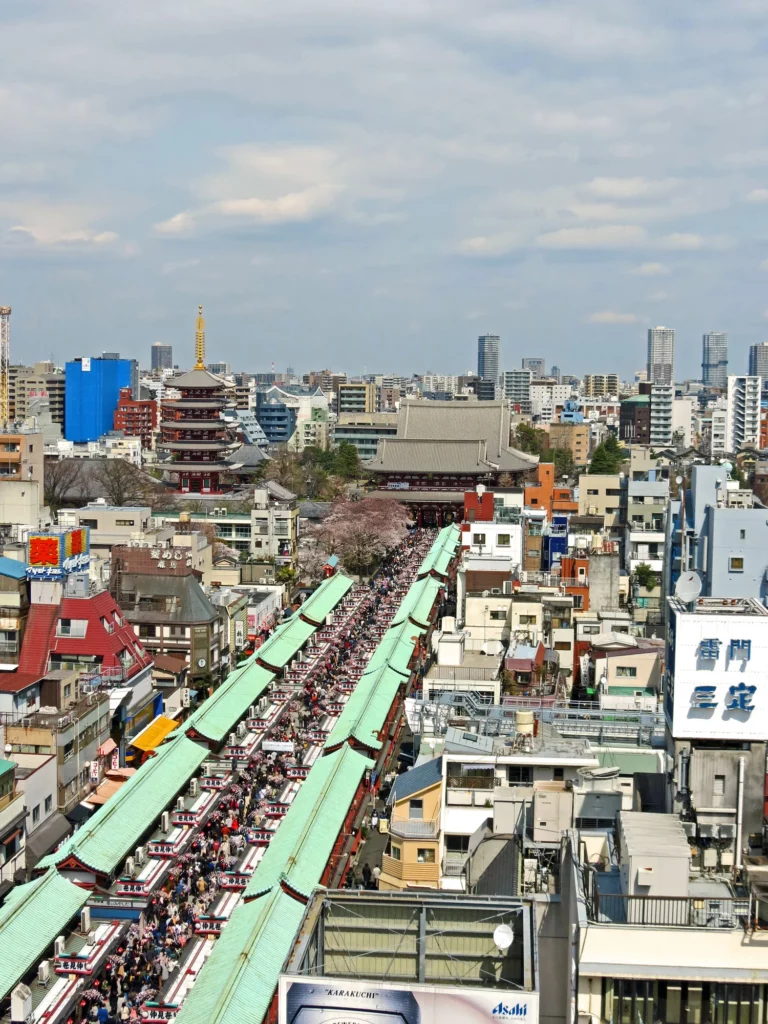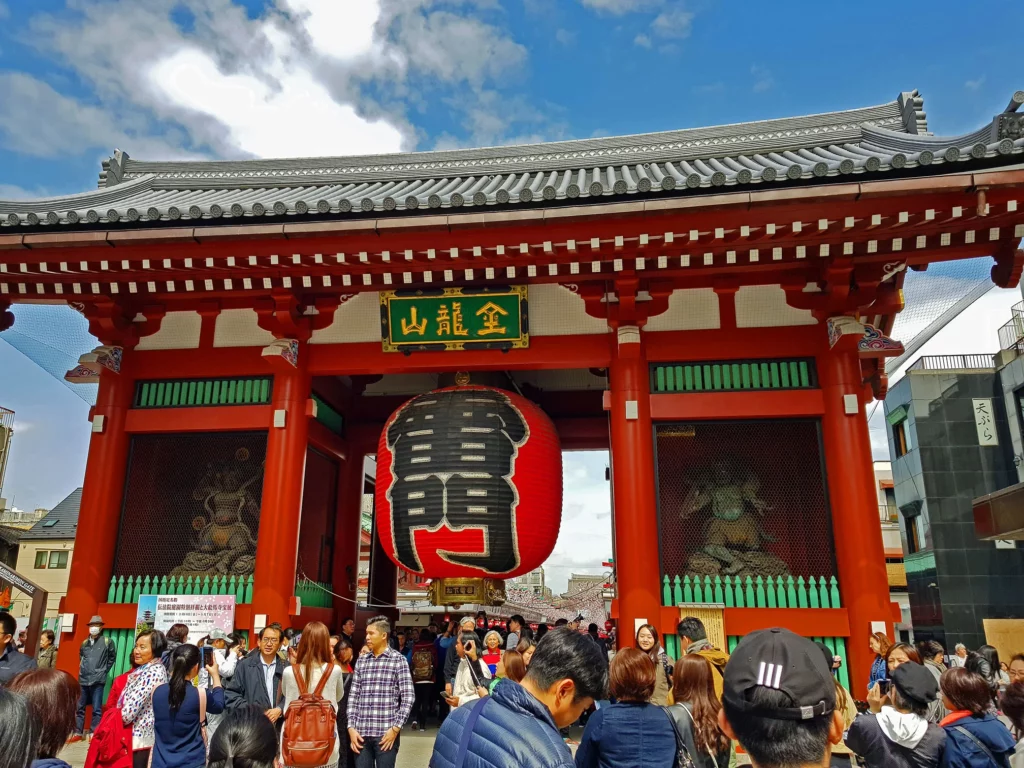Sensō-Ji is an ancient and revered Buddhist temple located in the Asakusa district of Tokyo, Japan. It is one of the city’s most significant and popular tourist attractions, drawing millions of visitors each year.
According to some sources it is even the most visited religious site worldwide. We cannot say for sure whether this is true or not, but we can confirm that it is a very popular temple. The picture below speaks for itself and we were walking shoulder to shoulder when we visited it.

The temple was founded in 645 AD, which makes it the oldest temple in the capital. It is dedicated to the bodhisattva Kannon, the goddess of mercy, after a statue of her was found in the Sumida River.
The temple complex is accessed through the iconic Kaminarimon Gate, which features a massive red lantern that weighs around 700 kilograms. In addition, the gate features 4 giant statues. The gods of wind and thunder can be seen on the front side and the Buddhist god Tenryū and the goddess Kinryū are on the opposite side.
As you pass through the gate you enter Nakamise-dori, a bustling shopping street lined with traditional stalls selling a wide range of souvenirs, crafts, and local snacks.
At the end of Nakamise-dori you find the Hōzōmon gate, the inner entrance gate of the temple. This gate is equally impressive with 2 large sandals and 2 guardian statues. It’s called Hōzōmon, which means treasure house, as several temple treasures are safely stored on the second level of the gate.
Once you’ve passed the Hōzōmon gate you will see the Hondo, the main hall of Sensō-Ji. The hall is adorned with intricate architectural details and houses a variety of religious artifacts. You can partake in the custom of purifying yourself with smoke from the temple’s incense cauldron and offer prayers or wishes. Our guide told me that the smoke would make the hair on my head grow back faster, it was worth a try.

Adjacent to the temple is the Asakusa Shrine, which is dedicated to the protective deities of the area. It provides a contrast to the Buddhist temple, and it showcases the harmonious coexistence of Shinto and Buddhist beliefs in Japan.
Sensō-Ji is especially vibrant during festivals such as Sanja Matsuri, held in May. The festival attracts hundreds of thousands of visitors yearly who witness the lively processions, traditional music, and dance performances.
The temple’s rich history, stunning architecture, and cultural significance make it a must-visit destination when you’re in Tokyo. We toured the temple with a local guide and that certainly helped us to appreciate the rich history and symbolism.
EXPERT TIP: If you visit Sensō-Ji in spring, during the Sakura make sure to also visit the adjacent Denboin Garden. The garden is closed for most of the year as it is the private garden of the abbot of the temple. However, it is traditionally open to the public for a few weeks every year. Usually, this is during the Sakura season. This will be announced on the temple’s website.


Tickets
The Sensō-Ji temple can be visited for free. The entrance fee for the Denboin garden is 300 JPY.
Getting there
Asakusa Station is the closest transit station. It can be reached with the Asakusa and Ginza Line. You can combine a visit to the temple with the Tokyo Skytree. The Tobu Skytree Line connects both sights.
Leave a Reply